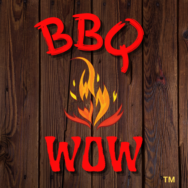History of Barbecue
Barbecue is identified with America as much as “Apple Pie” and the “Fourth of July”. But actually the history of barbecue goes back much farther than that.
In one form or another barbecue can be traced back to some of the earliest civilizations. In ancient times both the Egyptians and the Sumerians often cooked meat by smoking it over an open fire.
Christopher Columbus landed in the Caribbean in 1492 and found that the indigenous people had been cooking a variety of meats over a wooden frame of sticks, which they called barbacòa. Columbus was so impressed with this cooking style that he took it back and introduced it to Spain.
16th century, Spanish explorers introduced the barbacoa style of cooking to the American continent. The colonists soon adopted this form of cooking as a popular way of cooking meat. In 1897 Ellsworth B. A. Zwoyer patented a design for the charcoal briquette. Barbecue was now firmly established as a staple in the United States. Different types of rubs, marinades and sauces were developed and continue to be developed in various regions of the country.
As barbecue spread across the United States, several regions developed their own distinctive style and taste.
The Carolina's history of barbecue:
Barbecue has been a big part of Carolina’s history for more than 300 years. The history of barbecue in Carolina can be traced back to both South Carolina and North Carolina. In the 1500’s the Spanish introduced pigs to the area that eventually gave rise to the use of pork as the primary meat for barbecue in the area.

Mustard is king with South Carolina barbecue. South Carolina mustard sauce can be clearly traced to those German settlers and is still in abundant evidence today, even after 250 years. Starting in the 1730s and continuing into the 1750s, the British colony of South Carolina encouraged, recruited, and even paid the ocean passage for thousands of German families so they could take up residence in South Carolina. They were a hard working, sturdy and resourceful people who were given to an intensive family-farm type of agriculture, as opposed to the plantation system favored by the English settlers. These German settlers brought with them, in addition to their European farming style and the Lutheran Church, the common use of mustard.

In the late 1600s, with Colonists in North Carolina started using the readily available seasonings of vinegar, salt and pepper for their barbecue sauce. Adding tomatoes to their sauce wouldn’t have even come up, since they were thought to be poisonous at that time.
The use of tomatoes wouldn’t be introduced for another 200 years. Now known to be safe to eat, in the early 1800’s they started adding tomato catsup and brown sugar to their vinegar-based sauce.
Memphis, Tennessee history of barbecue:

Barbecue in Memphis, Tennessee dates back to the early 20th century. The year was 1922! Many people consider this as the start of their famous pit-smoked barbecue. Leonard Heuberger opened a small stand of 5 stools, selling a barbecue sandwich that he created, for just five cents.
Memphis barbecue centers around smoking pork, using a sweet smoky tomato-based sauce.
Kansas City history of barbecue:

Often referred to as the “Barbecue Captial of the World”! Here’s why. Since the early 1900’s it’s been hard to separate the phrase “Barbecue Capital of the World” from Kansas City, as they seem to go hand-in-hand.
It all started in 1907 with Henry Perry, when he started selling ribs and smoked meat in an alley in the Garment District. It wasn’t long before he started to become quite successful and declared himself in newspaper ads as “The Barbecue King” of Kansas City. He later went on to mentor the owners of a couple of the most well- known barbecue restaurants in Kansas City’s history. His barbecue soon became a staple in the famous Kansas City jazz scene. Revered by famous artists such as Charlie Parker, who helped spread the word.
Rather than just focusing on one selection of meat, Kansas City barbecue offers a wide selection of meat (beef, pork and chicken). They have specialized in a particular dish called “Burnt Ends”, which is the charred edges of a smoked beef brisket. Their sauce is a thick sweet, tangy tomato-based sauce.
Texas history of barbecue:

Texas style barbecue centers around the fact that the meat is slow cooked by smoking for hours with such wood as pecan, oak or mesquite. This tends to give the meat a distinctive smokey flavor.
The primary meat for Texas barbecue is beef. This comes from the influence of the large cattle drives from Texas to Kansas in the middle of the 1800’s. The cattle drives typically included 3,000 head of cattle and a crew of 12 cowboys. The beef would be slowly cooked over an open fire for hours.
Barbecue Today:
Barbecue and grilling has become so much of our everyday experience that it is no longer restricted to your backyard. People grill while traveling, camping or tailgating at sporting events.
